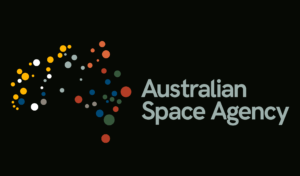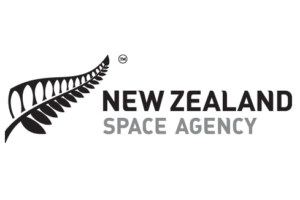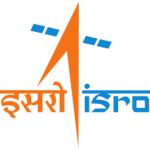Space law in the United States – does it apply to you?
If you are an Australian entrepreneur interested in conducting space activities from US territory, you will need to comply with the US space transportation legal and regulatory framework.
This is in addition to any relevant provisions of the Australian Space (Launches and Returns) Act 2018 (AUS).
Space activities undertaken in US territory by US citizens or foreign nationals are regulated by the Commercial Space Launch Activities Legislation Title 51 of the US Code, Chapter 509 (USA) consistent with US international obligations. These statutory requirements are implemented under the Federal Aviation Administration (FAA) Commercial Space Transportation Regulations Title 14 Code of Federal Regulations (CFR), Chapter III (USA). The US government is committed, via the National Space Transportation Policy 2013 (USA), to improve the US commercial space launch industry by encouraging innovation, entrepreneurship, a closer relationship between government and private industry, and international competition. These broad objectives are reflected in US space activity legislation and regulations.
United States space law overview
If you are an Australian entrepreneur interested in undertaking space activities in the United States, it is important that familiarise yourself with, and understand, the primary legal and regulatory frameworks that you may encounter.
Below is a brief summary of US policy codes, regulatory instruments and legislation relating to the carrying out of spaceflight and launch activities.
The National Space Transportation Policy 2013 (USA), issued by President Obama on 21 November 2013, is the most recent policy document providing US federal departments and agencies guidance on the development and use of commercial and governmental space transportation systems. This policy updates the National Space Policy of 2010 (USA).
The main focus of the 2013 policy is to ensure that space remains accessible to the US, so as to enable its ongoing fulfilment of national space-related interests and security objectives. The 2013 policy is also designed to promote the ongoing development and operation of US launch industry by encouraging innovation, entrepreneurship, a closer relationship between government and private industry to surpass international competition.
The main legislative document which governs commercial space launch activities in the US is the Commercial Space Launch Activities – Title 51 of the US Code, Chapter 509 (USA).
This legislation covers a number of aspects relevant to space activities conducted in the US, including:
- licence and permit applications and requirements;
- liability insurance and financial responsibility requirements;
- effective periods, modifications, suspensions and revocations of licences; and
- restrictions on launches, operations and re-entries.
The Commercial Space Transportation Regulations – Title 14 Code of Federal Regulations (CFR), Chapter III (USA) is the key document which implements the Commercial Space Launch Activities – Title 51 of the US Code, Chapter 509 (USA) legislation.
Other relevant legislation include the following — enacted as amendments to the primary legislative instrument, the Commercial Space Launch Activities – Title 51 of the US Code, Chapter 509 (USA):
- Commercial Space Launch Competitiveness Act 2015 (USA)
- Commercial Space Launch Act 2011 (USA)
- Commercial Space Launch Amendments Act of 2004 (USA)
These documents are listed for historical reference.
The US has ratified the following international agreements:
- Convention on Registration of Objects Launched into Outer Space (‘Registration Convention’) 1976;
- Convention on International Liability for Damage Caused by Space Objects (‘Liability Convention’) (1972);
- Treaty on Principles Governing the Activities of States in the Exploration and Use of Outer Space, Including the Moon and Other Celestial Bodies (‘Outer Space Treaty’) 1967; and
- Agreement on the Rescue of Astronauts, the Return of Astronauts and the Return of Objects Launched into Outer Space (‘Rescue and Return Agreement’) 1968.
For an overview of these international agreements, visit our Space Law Fundamentals page.
Relevant US regulatory bodies include the Federal Communications Commission (FCC), which regulates satellite communications; the National Oceanic and Atmospheric Administration (NOAA), which regulates remote sensing activities; and the Federal Aviation Administration (FAA) Office of Commercial Space Transportation, which regulates all aspects of satellite launch licensing. As this article intends to provide information regarding launch licensing in the US, the FAA is explored in more depth below.
In the context of space activities, the primary objective of the FAA is to ensure public safety, protect property, and maintain the national security and foreign policy interests of the US during commercial launch and re-entry activities. In addition to regulating the US commercial space transportation industry and ensuring compliance with international obligations and national interests; the FAA encourages, facilitates and promotes the US commercial space transportation industry.
The FAA conducts its licensing and regulatory work through the Office of the Associate Administrator and several divisions, including:
- Space Transportation Development Division
- Licensing and Evaluation Division
- Regulations and Analysis Division
- Safety Inspection Division
- Operations Integration Division
For more information about the FAA, visit faa.gov.
Important to note:
The information in this article is intended to give you a basic idea of what you may take into consideration when applying for a launch licence or permit in the US. It is not comprehensive.
If you are unsure about the application process, it is recommended that you seek legal advice regarding your circumstances.
Applying for a launch licence
The Federal Aviation Administration (FAA) is responsible for issuing licenses for launch, re-entry, launch operator and experimental permits. The FAA will only provide a licence where your activities will not be averse to public health and safety, property, US national security or foreign policy interests, or international obligations.
licences & permits
The FAA offers a number of different licences and permits:
- Launch/Re-entry Vehicles Specific Licence
- Operator licence
- Experimental Permits for Reusable Sub-orbital Rockets
The Launch and Re-entry specific licences are explained in more detail here, as is it anticipated to be the most relevant license to Australian space entrepreneurs interested in conducting space activities from the US.
Other licences are briefly discussed, but not comprehensively addressed due to a lack of relevance to Australian entrepreneurs. For example, a launch vehicle operator licence or launch site licence will be of little relevance to an Australian entrepreneur as this will be the responsibility of the US launch vehicle operator/site operator that the Australian entrepreneur has contracted with. Although an Australian entrepreneur may not be responsible for obtaining these licences, they will still be required to share certain information with the responsible US operator in order to fulfil FAA application requirements.
The most relevant information for an Australian entrepreneur in all cases will be the payload review requirements, financial responsibility and insurance requirements (detailed below).
Launch/Re-entry Vehicles Specific Licence
According to the FAA website, a launch or re-entry specific licence allows you to ‘conduct one or more launches or re-entries having the same operational parameters of one type of launch or re-entry vehicle operating at one launch or re-entry site.’
Launch or re-entry vehicles are classified as either expendable or reusable and the application process for each, while similar, remains separate.
The application process for both expendable and reusable launch vehicle licences involves the following:
This process involves consultations between the applicant and the FAA prior to official submission of an application for a licence. The FAA will have an opportunity to inform you of the application process and you will have the opportunity to inform the FAA of your proposal or intended activities.
The FAA reviews your application to ensure that it is not contrary to US policy (e.g. public safety, national security or foreign policy). Your application will be reviewed by government agencies and the FAA will consult with a number of federal agencies authorised to address US policy issues.
The FAA conducts safety reviews to ensure that you are capable of launching a vehicle and its payload without putting public health and safety, or property, at risk of harm.
The FAA conducts payload reviews to ensure that you have obtained all the required licences, authorisations and permits.
The FAA requires the following information regarding a payload under review:
- Payload name;
- Payload class;
- Physical dimensions and weight of the payload;
- Payload owner and operator, if different from the person requesting payload review;
- Orbital parameters for parking, transfer and final orbits;
- Hazardous materials, and radioactive materials, and the amounts of each;
- Intended payload operations during the life of the payload; and
- Delivery point in flight at which the payload will no longer be under the licensee’s control.
In addition to complying with US regulations, an Australian entrepreneur is also required to hold an Australian Overseas Payload Permit in order to satisfy Australian legal requirements.
The permit covers the launch of space objects from a fixed or mobile launch facility or place outside Australia.
The FAA makes financial responsibility determinations to establish your financial responsibility, as well as to address the allocation of all risk requirements through insurance or via a reciprocal waiver of claims.
Liability Insurance & Financial Responsibility
An Australian entrepreneur is required to obtain liability insurance or demonstrate financial responsibility in amounts to compensate for the maximum probable loss from claims by:
- third parties for death, bodily injury, or property damage resulting from an activity carried out under the license; and
- the US government against a person for damage or loss to government property resulting from an activity carried out under the license.
The FAA will prescribe the amount of insurance required based upon its determination of maximum probable loss, but it will not exceed the lesser of:
- $500,000,000 for third party claims;
- $100,000,000 for US government claims; or
- the maximum liability insurance available on the world market at reasonable cost.
Reciprocal Waiver of Claims
In addition to financial responsibility and insurance requirements, licence holders are required to make a reciprocal waiver of claims with the relevant parties involved in launch or re-entry services under which each party agrees to be responsible for personal injury to, death of, or property damage or loss sustained by it or its own employees resulting from an activity carried out under the applicable licence. The waiver applies only to the extent that claims are more than the amount of insurance or demonstration of financial responsibility as stated above.
These factors will have a strong influence on the assessment by the Australian Space Agency of the need for an Australian entrepreneur to have insurance, and in what amount.
The FAA requires you to provide information regarding all environmental impacts associated with your proposed launch.
The FAA monitors your compliance with the Commercial Space Launch Act the Commercial Space Transportation Licensing Regulations, and the terms and conditions attached to your licence.
Operator Licence
A launch or re-entry operator licence authorises a person to conduct launches or re-entries from one launch or re-entry site within a range of operational parameters of launch or re-entry vehicles from the same family of vehicles transporting specified classes of payloads or performing specified activities.
It is unlikely that Australian space entrepreneurs will need to apply for this licence, however, they may still be required to provide specific information to the holders of a US Operator Licence to satisfy licence requirements. In this case, the same application process as the launch or re-entry specific license outlined above is required to be followed.
Launch Site Licence
The FAA issues launch site licences which authorises a person to operate a launch or re-entry site.
Experimental Permits for Reusable Suborbital Rockets
The FAA issues Experimental Permits for the following activities:
- Research and development to test new design concepts, new equipment, or new operating techniques;
- showing compliance with requirements as part of the process for obtaining a license; or
- crew training prior to obtaining a license for a launch or re-entry using the design of the rocket for which the permit would be issued.
This permit is of limited interest to Australian entrepreneurs as an entrepreneur will generally partner with another entity responsible for the application process. However, the Australian entrepreneur may be required to provide specific information so that the licence holder can meet prescribed conditions.
USE CASE EXAMPLE:
Sarah wants to know what licences or permits she will need for her space operations
Sarah from ANGELS Aerospace is planning to launch a payload on an expendable launch vehicle operated by Andromeda Space under a launch services agreement.
- Sarah is not required to apply for a Launch Operator licence as Andromeda Space is responsible for operating the launch vehicle. Sara will, however, be required to provide information to Andromeda Space regarding the ANGELS Aerospace payload in order to satisfy the Launch Operator Licence requirements.
- Sarah will be required go through the application process for Expendable Launch Vehicle Specific licence on behalf of ANGELS Aerospace to send their payload on the Andromeda Space rocket.
- Sarah must also comply with Australian law and obtain an Overseas Payload Permit.
Useful links
These links from the FAA website provide additional information about regulations and the regulatory process:
Frequently Asked Questions (FAQ)
It depends on a number of factors:
- the launch vehicle used
- size and destination of the payload
- market fluctuations
- insurance requirements
- contract terms and conditions
According to the FAA, launching a small payload into LEO could start at $7million, and a large satellite in GEO ranges from $60 to $90 million.
There are a number of launch vehicle providers in the US, including:
- United Launch Alliance (Delta IV and Atlas V launch vehicles);
- SpaceX (Falcon series of launch vehicles);
- Orbital ATK / Northrop Grumman (Pegasus and Taurus launch vehicles); and
- Lockheed Martin (Atlas V and Athena launch vehicles).
One of the greatest challenges for Australian space entrepreneurs is actually getting their payload into space. Challenges can come in the form of exorbitant launch costs, unavailability of launch vehicles, and significant delays with scheduled launches. At present, launches are scheduled around only one or two major customers.
In the US there are launch service providers such as Spaceflight Industries which provide more cost-effective payload rideshare opportunities with the growing number of launch vehicle providers. The most recent development in rideshare opportunities in the US is SpaceX’s SmallSat Rideshare Program which will permit small satellite operators to book a place on regularly scheduled Falcon 9 rocket launches to sun synchronous orbit. The advantage of this service is that space entrepreneurs will not be tied to the success of the one or two big-ticket customer launches. If the scheduled launch is delayed, SpaceX will allow space entrepreneurs to reallocate the monies paid towards re-booking on a subsequent launch running on time.
Comparing foreign licensing regimes
Key features:
- Australian space law applies to space activities in Australia, and to Australian nationals conducting space activities abroad.
- Space operators are required to hold insurance of up to AUD$100 million under Australian space law.
- The Australian Space Agency charges costs for assessing applications for space licences and permits.
Primary regulator:
The primary regulator of space activities in Australia is the Australian Space Agency.

Want to learn more about space law in Australia? Visit our article on laws applicable to launch.
Key features:
- The New Zealand space licensing regime does not charge fees for an application, or for holding a licence or permit.
- New Zealand currently recognises licences from certain jurisdictions as meeting their licence or permit requirements.
- Australia and New Zealand offer equivalent space licences and permits.
Primary regulator:
The primary regulator of space activities in New Zealand is the NZ Space Agency.

Want to learn more about space law in New Zealand? Visit our article on New Zealand space law.
Key features:
- Three primary licence activities: Operator, Spaceport and Range Control.
- The granting of licences is controlled by the prescribed Regulator.
- Regulations, including insurance requirements, are still in the process of being drafted.
Primary regulator:
The primary regulator of space activities in the United Kingdom is the UK Space Agency.

Want to learn more about space law in the United Kingdom? Visit our article on United Kingdom space law.
Key features:
- Separated ‘launch’ and ‘command’ phase, enabling ease in apportionment of liability in the case of damage.
- Four obtainable licences in addition to case-by-case authorisation, with lack of clarity surrounding costs.
- Clear insurance requirements and regulations regarding liability.
Primary regulator:
The primary regulator of space activities in France is Centre National d’Études Spatiales (CNES).

Want to learn more about space law in France? Visit our article on French space law.
Key features:
- Launches are conducted through the Indian government, and there is an established commercial framework with government owned launch provider ‘Antrix’.
- Indian launch vehicles have flight heritage, having successfully launched hundreds of foreign space objects.
- There is a lack of legislation, leading to potential for discretion and uncertainty.
Primary regulator:
The primary regulator of space activities in India is the Indian Space Research Organisation.

Want to learn more about space law in India? Visit our article on Indian space law.
Key features:
- Unlike other space-faring nations, China does not have comprehensive laws to regulate space activities.
- Licence holders are subject to continuing supervision and obligations under Chinese regulations.
- Insurance for space activities is compulsory under the Chinese regulatory regime.
Primary regulator:
The primary regulator of space activities in China is the State Administration for Science, Technology and Industry for National Defence (SASTIND).
Want to learn more about space law in China? Visit our article on Chinese space law.